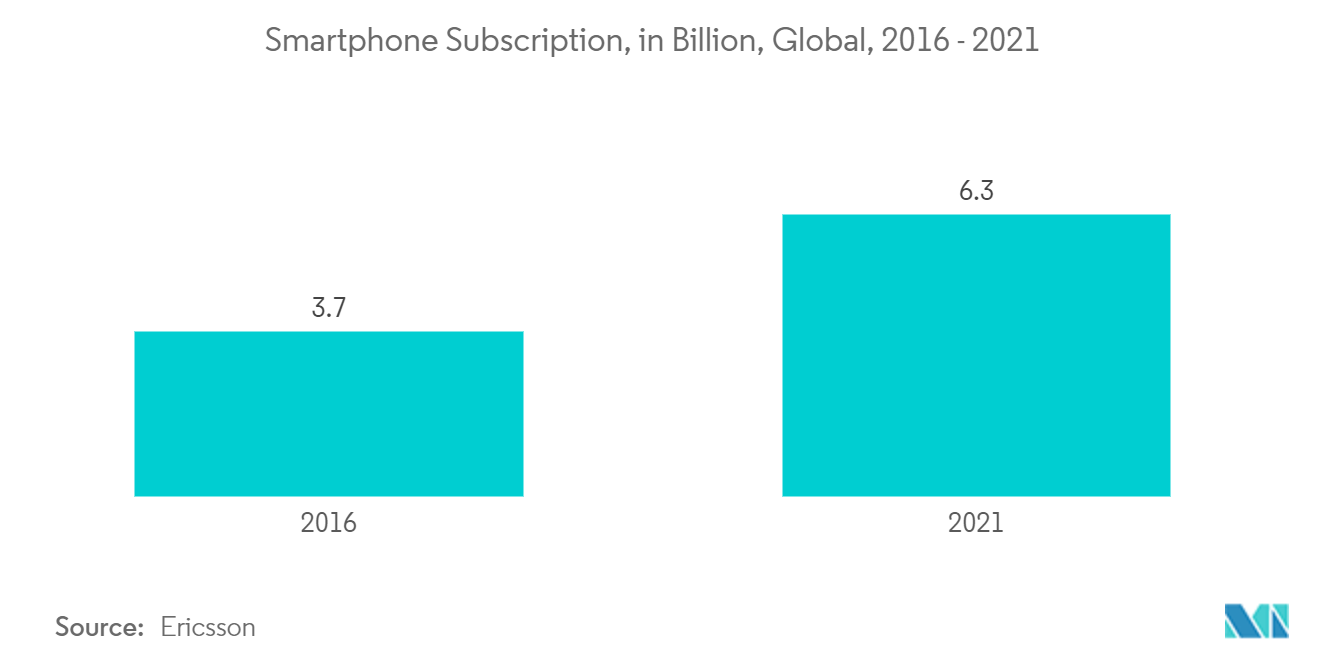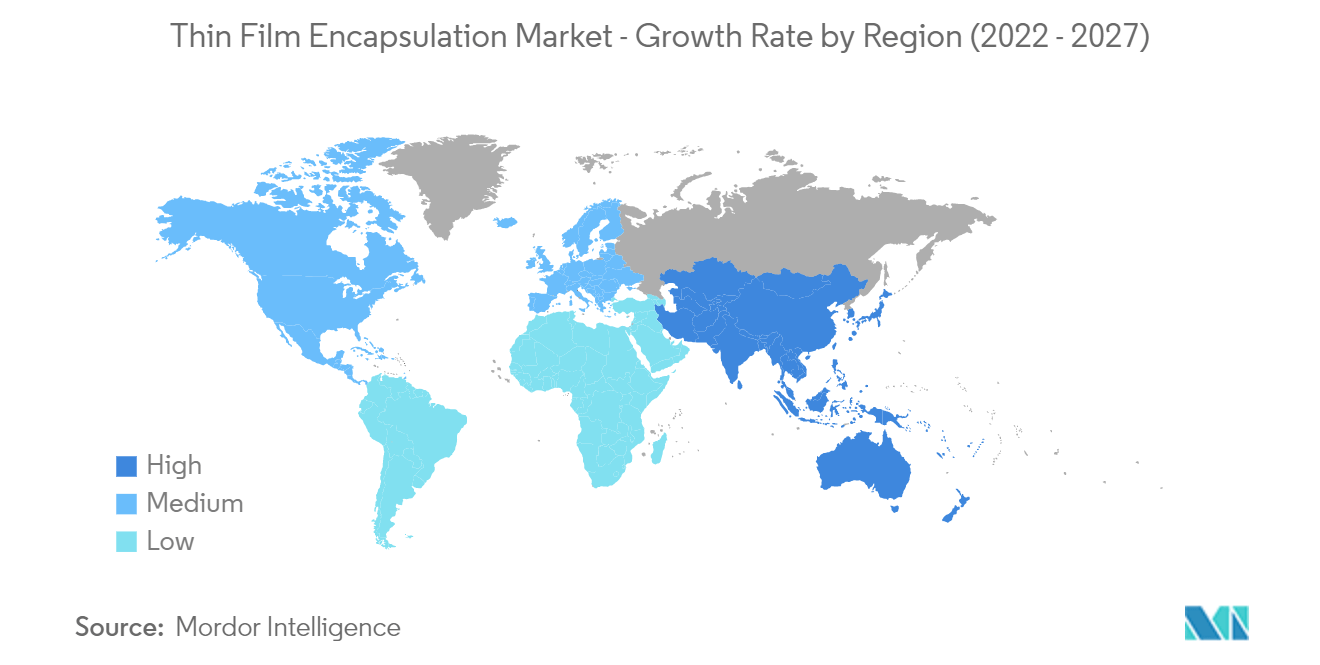Market Trends of Thin Film Encapsulation Industry
This section covers the major market trends shaping the Thin Film Encapsulation Market according to our research experts:
Flexible OLED Display Segment to Hold Significant Market Share
- The Flexible organic light-emitting diode (OLED) will be the most advanced display technology for buyers and industries in the near future. Thin-film encapsulation (TFE) technology is the utmost demanding necessity to prevent water and oxygen penetration into flexible OLED devices as a polymer substrate does not offer the identical barrier performance as glass, the TFE development on both the bottom and top side of the device layers for good lifetimes.
- With excellent display quality, such as perfect video capability, vivid full color, and thin form factor, AMOLED (active-matrix organic light-emitting diode) is progressing into OLED TV (television), mobile devices, and smartwatches are poised to access consumer markets in the near future. AMOLED on flexible substrates would be considered the ultimate display because of its ruggedness and versatility. There are several hurdles to realizing flexible AMOLED, particularly on plastic substrates. Among these difficulties, TFE is the most demanding task because OLED demands the most significant degree of moisture and oxygen penetration protection in electronic gadgets.
- The increasing demand for smartphones and wearable devices with innovative features is expected to play a crucial role in the growth of the flexible display market. For instance, according to Ericsson, smartphone subscription was expected to reach 6.3 billion in 2021.
- Considering the recent success of foldable smartphones, several vendors are increasing their R&D efforts to develop the technology further. For instance, in December 2021, LG Display announced that, at CES2022, it would demonstrate how its flexible OLED technology creates new and different lifestyles. The company also announced the unveiling of two new products that would use OLED displays.
- Furthermore, OLED technologies are persistently meeting the demands of customers and markets. The success of flexible OLED applications still needs further advancements in the technology of TFE. Numerous barrier architectures are possible, and each technology has distinctive materials, processing, and barrier characteristics. The principal benefit of this approach is that it can obtain low WVTR (water vapor transmission rate) with fewer layers because ALD/MLD layers have much more satisfying film integrity. Still, the disadvantage has been the low throughput and restraint in the scalability of the MLD/ALD process.
- Therefore, more excellent knowledge of the synergistic effect of polymer/inorganic multilayers may lead to enhanced barrier performance from simplistic structures. However, there are still problems with making practically the TFE on extensive area/flexible OLED application. Hence, a novel ALD and MLD system will give a significant breakthrough and opportunity for TFE in the OLED industry.

Asia-Pacific Expected to Witness the Highest Growth Rate
- Asia-Pacific is expected to hold a significant market share in the thin-film encapsulation market. The regional market's growth can be associated with the progression of the electronics and semiconductor industries, mainly in China. The deep-rooted electronics manufacturing bases in South Korea, China, and Taiwan led to an enhanced demand for thin film encapsulation technologies.
- Moreover, in a region with restrictive regulatory policies on FDI across the industries, the electronics-manufacturing area is more open to FDI compared with the national averages for all the merged sectors. Government policies, especially in recent years, have supported establishing the dynamic electronics industry in the area, which is expected to create a favorable market scenario for the thin film encapsulation industry. For instance, in 2021, the Indian government launched an INR 76,000 crore PLI scheme to boost the country's semiconductor and display manufacturing industry.
- The increase in industrialization and an addition in the number of end-user industries in developing economies, such as China and India, have offered various untapped opportunities. Moreover, China, Indonesia, South Korea, Japan, and Taiwan have led the thin-film encapsulation market growth due to growing solar panel manufacturing and installations. According to IEA, China currently manufactures and supplies about 80 percent of the world's solar photovoltaic (PV) panels.
- Additionally, the growing demand for electronic components and display panels from the automotive industry is expected to boost the demand for semiconductors, and display units in the region, directly affecting the market studied accurately.

